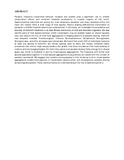Mixed-host Aggregations And Helminth Parasite Sharing In An East African Wildlife-livestock System.

View/
Date
2014-07Author
VanderWaal, K
Omondi, GP
Obanda, V.
Language
enMetadata
Show full item recordAbstract
Parasitic infections transmitted between livestock and wildlife pose a significant risk to wildlife conservation efforts and constrain livestock productivity in tropical regions of the world. Gastrointestinal helminths are among the most ubiquitous parasites, and many parasites within this taxon can readily infect a wide range of host species. Factors shaping bidirectional transmission of parasites in wildlife-livestock systems are understudied. In this study, we investigate the prevalence and diversity of helminth infections in an East African community of wild and domestic ungulates. We also identify pairs of host species between which transmission may be possible based on shared parasite taxa, and explore the role of multi-host aggregations in shaping patterns of parasite sharing. Helminth taxa detected included Trichostrongylus, Trichuris, Paramphistomum, Skrjabinema, Strongyloides, Strongylus spp., and other strongyle-type nematodes. We found that nearly 50% of individuals harbored at least one species of helminth, but certain species, such as zebra and impala, exhibited higher prevalence than others. High canopy feeders, like giraffe, had lower prevalence than hosts feeding at medium and low foraging heights. For helminths, patterns of parasite sharing likely emerge from shared space use, which is mediated in part by mixed-species aggregations. The frequency with which host species associated together in mixed-species aggregations was positively correlated with the number of parasite taxa shared. We suggest that variation among species in their tendency to form mixed-species aggregations creates heterogeneity in transmission opportunities, and consequently, parasite sharing across ungulate species. These results enhance our understanding of the role of spatiotemporal relationships among host species in shaping parasite communities in mixed wildlife-livestock grazing systems.
Citation
Vet Parasitol. 2014 Jul 21. pii: S0304-4017(14)00402-6Publisher
University of Nairobi
